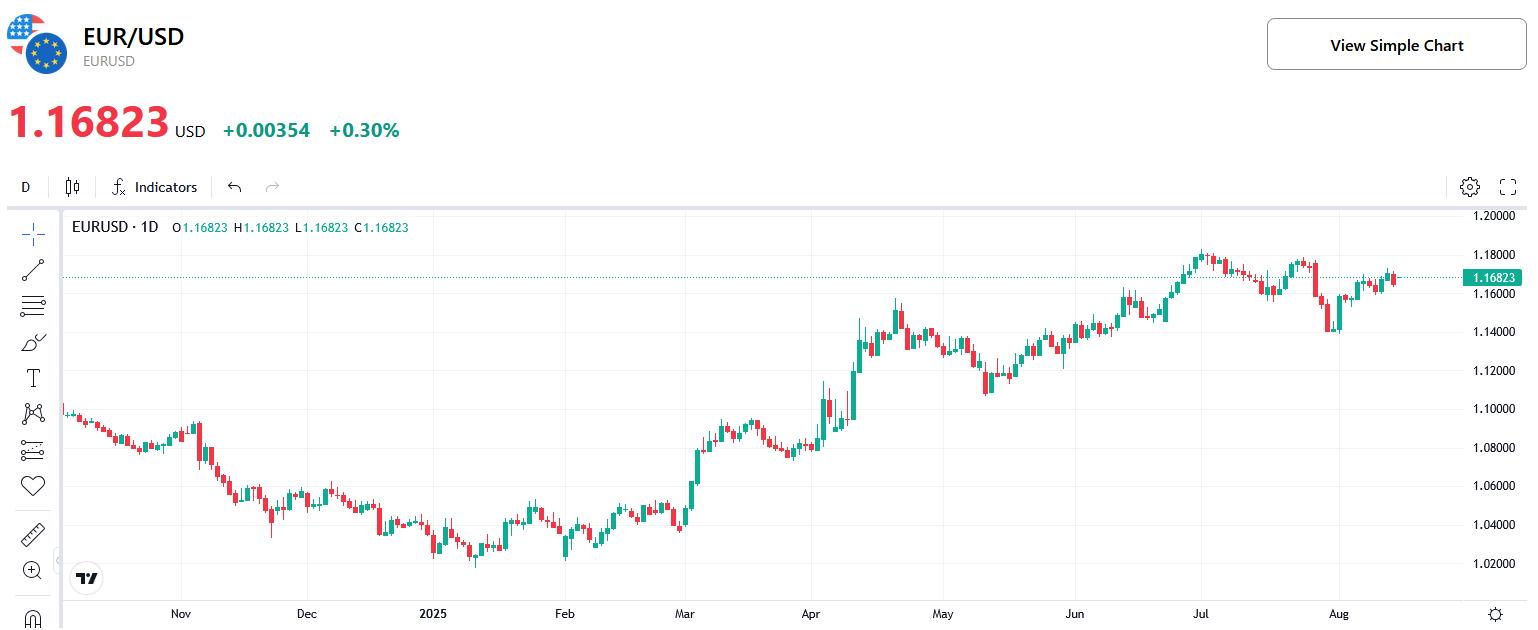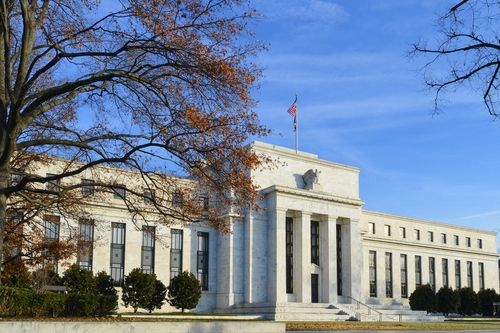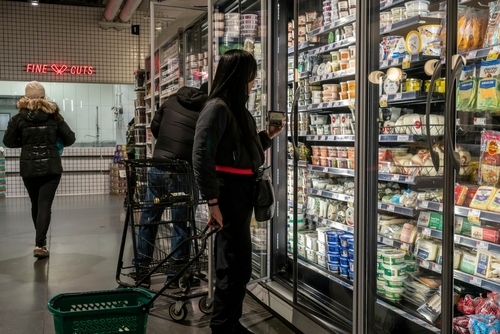Eurozone Q2 GDP Commentary: Will the Euro's Upward Momentum Persist?


TradingKey - On 14 August 2025, Eurostat published Q2 GDP figures, revealing a drop in the Eurozone's quarter-on-quarter growth from 0.6% in the first quarter to 0.1%. Consequently, annual growth eased from 1.5% to 1.4%. The slowdown primarily stems from the diminishing boost from European companies' earlier "export rush" to counter upcoming U.S. tariffs. Moving forward, the Eurozone economy remains vulnerable to ongoing downward pressures. While a recent EU-U.S. trade deal has prevented a more intense trade conflict, the U.S. still applies a 15% tariff on most EU goods, significantly impacting the EU economy, particularly Germany. With a subdued economic outlook and consistently low inflation, we anticipate that the European Central Bank (ECB) will resume a cycle of interest rate cuts starting in September, potentially creating a low-interest-rate environment in the Eurozone by mid-2026.
In the forex market, starting in February this year, the global push toward de-dollarisation has exerted downward pressure on the U.S. dollar index, leading to a consistent increase in the EUR/USD exchange rate. Moving forward, considering the dual impact of decelerating Eurozone economic growth and the European Central Bank’s sustained interest rate reductions, we anticipate a slowdown in the euro’s upward momentum, with the currency pair likely to experience a period of fluctuation.

Source: TradingKey
Main Body
On 14 August 2025, Eurostat issued Q2 GDP figures, showing that the Eurozone’s quarter-on-quarter growth decreased from 0.6% in the first quarter to 0.1%, leading to a drop in annual growth from 1.5% to 1.4% (Figure 1). This result is in line with general market forecasts. It’s worth noting that preliminary data for this quarter was released on 30 July, and the final numbers published now match those initial estimates exactly.
Figure 1: Eurozone Real GDP (%)

Source: Refinitiv, TradingKey
In Q2, the Eurozone economy achieved a quarter-on-quarter growth of 0.1%, the weakest quarterly growth since Q1 2024. This deceleration is primarily due to the diminishing impact of the "export rush" by European companies, which had initially been driven by efforts to counter the effects of upcoming U.S. tariffs.
The Eurozone economy’s continued growth largely stems from the contributions of Spain and France. Spain posted a strong 0.7% growth in Q2, driven by robust consumer spending and a steady uptick in business investment. France saw a 0.3% growth rate, primarily propped up by rising business inventories, while real domestic demand and trade remained a drag on GDP. As a result, we assess that France’s near-term economic resilience is unlikely to hold in the medium term.
Conversely, Germany and Italy saw their economies contract slightly, with GDP in both nations falling by 0.1%. In Germany’s case, the downturn is mainly attributed to insufficient investment in machinery and construction, though household and government spending offered some resilience. Italy’s economic softening results from subdued domestic demand and decelerating industrial activity.
Moving forward, the Eurozone economy remains exposed to ongoing downward pressures. Although the EU recently finalised a trade deal with the U.S., preventing a more intense trade dispute, the U.S. continues to apply a 15% tariff on most EU goods. This is likely to place considerable strain on the EU economy, with Germany facing particularly severe impacts. Additionally, these tariffs could further encourage the relocation of European manufacturing to the U.S., clouding the Eurozone’s economic prospects. Meanwhile, the EU’s pledge to boost investment in the U.S. may negatively affect industrial growth and labour markets in Europe.
Considering the weak economic outlook and persistently low inflation levels (Figure 2), the European Central Bank (ECB) is likely to continue its accommodative monetary policy approach. After the ECB’s decision on 24 July to hold policy rates steady (Figure 3), we anticipate that the central bank will resume a cycle of interest rate cuts starting in September, potentially ushering in a low-interest-rate environment in the Eurozone by H1 2026.
Figure 2: Eurozone CPI (%, y-o-y)

Source: Refinitiv, TradingKey
Figure 3: ECB Policy Rate (%)

Source: Refinitiv, TradingKey
In the forex market, starting from February 2025, the global wave of de-dollarisation has put downward pressure on the U.S. dollar index, leading to a consistent rise in the EUR/USD exchange rate. Moving ahead, considering the dual impact of decelerating Eurozone growth and the European Central Bank’s continued rate cuts, we anticipate a slowdown in the euro’s upward momentum, with the currency pair likely to experience a period of fluctuation.
Eurozone Q2 GDP Preview: Euro Losing Momentum, Likely to Enter a Fluctuation Range
TradingKey - On 14 August 2025, the eurozone will release its Q2 GDP data. Market consensus expects that the quarterly growth rate will slow to 0.1% in Q2, down from 0.6% in Q1, which will cause the year-on-year figure to drop by 0.1 percentage points compared to the previous reading.
The primary reasons behind the economic slowdown are twofold: First, the positive effects from European companies’ "rush exports"—a strategy adopted to beat the implementation of U.S. tariff measures—have gradually faded. Second, as the impact of U.S. tariffs on global trade continues to unfold, the overall economic growth of the eurozone has been dragged down accordingly.
Looking ahead, the eurozone economy still faces persistent downside risks, with the core driver being that tariff provisions in the new EU-U.S. trade agreement will undermine the export competitiveness of European enterprises. Given the weak economic outlook and persistently low inflation levels, the European Central Bank (ECB) is expected to maintain a relatively accommodative monetary policy stance.
In the foreign exchange market, since February this year, the US Dollar Index has come under pressure and declined due to the global trend of de-dollarisation, which in turn has driven the EUR/USD exchange rate to rise continuously. Looking ahead, as the slowdown in the eurozone's economic growth and the ECB's continued interest rate cuts form a superimposed effect, we predict that the euro's upward momentum may weaken, and this currency pair will most likely enter a fluctuation range.
.jpg)
Source: TradingKey
Main Body
On 14 August 2025, the eurozone will release its Q2 GDP data. Market consensus expects that the quarter-on-quarter growth rate for Q2 will slow to 0.1% from 0.6% in Q1, causing the year-on-year figure to decline by 0.1 percentage points compared to the previous reading (Figure 1). We concur with this market expectation. Notably, the eurozone already published the flash estimate of this data on 30 July, and the July flash figure aligns with the expected value set to be released in August.
Figure 1: Consensus Forecasts
.jpg)
Source: Refinitiv, TradingKey
The eurozone economy is projected to grow merely by 0.1% quarter-on-quarter in the second quarter, marking its lowest quarterly growth rate since the first quarter of 2024 (Figure 2). This slowdown can be primarily attributed to two key factors: First, the positive effects from European companies' "export rush"—a strategy to ship goods ahead of the implementation of U.S. tariff measures—have gradually faded. Second, as the impact of U.S. tariffs on global trade continues to unfold, the overall economic growth momentum of the eurozone has been dampened accordingly.
There are divergences in economic performance across countries within the eurozone. Specifically, Germany and Italy are projected to see negative quarter-on-quarter growth in real GDP during the second quarter. Beyond lacklustre export performance, these two countries face unique domestic factors contributing to their economic weakness: Germany's economy is primarily under pressure due to sluggish investment in the machinery and construction sectors, though household and government spending continue to provide some support; Italy is experiencing an economic slowdown driven by insufficient domestic demand and a deceleration in industrial activities.
On the other hand, Spain's economy is expected to deliver a standout performance in the second quarter, driven by robust consumer spending trends and a gradual recovery in corporate investment. Meanwhile, France's economy is also projected to show a relatively positive trajectory. However, its growth remains heavily reliant on increased corporate inventories, with actual domestic demand and trade continuing to act as drags on GDP. Based on this, we believe that the short-term strength of France's economy is unlikely to be sustained over the medium term.
Looking ahead, the eurozone economy still faces the risk of a sustained downturn, with the core trigger being that tariff provisions in the new EU-U.S. trade agreement will weaken the export competitiveness of European enterprises. In the short term, such an impact may weigh on economic growth in European countries; in the medium to long term, it could further exacerbate the shift of European manufacturing to the U.S., becoming a drag on the prospects of Europe’s economy. Meanwhile, as the EU has pledged to increase investment in the U.S., the development of local industries and employment conditions in Europe may be negatively affected as a result.
Figure 2: Eurozone Real GDP (%)
.jpg)
Source: Refinitiv, TradingKey
In light of a sluggish economic outlook and inflation remaining at relatively low levels (Figure 3), the European Central Bank (ECB) is anticipated to stick to a fairly loose monetary policy direction. Since it began cutting interest rates in June 2024, the central bank has so far lowered its policy rates by a cumulative 235 basis points (Figure 4). After the ECB opted to leave policy rates steady on 24 July, we conjecture that it will once again enter a phase of continuous rate cuts starting from September, and by the first half of 2026, the eurozone is set to see a low-interest-rate environment.
Figure 3: Eurozone CPI (%, y-o-y)
.jpg)
Source: Refinitiv, TradingKey
Figure 4: ECB Policy Rate (%)
.jpg)
Source: Refinitiv, TradingKey
In the foreign exchange market, since February this year, the US Dollar Index has come under pressure and declined due to the global trend of de-dollarisation, which in turn has driven the EUR/USD exchange rate to rise continuously. Looking ahead, as the slowdown in the eurozone's economic growth coincides with the ECB's ongoing interest rate cuts, forming a combined effect, we predict that the euro's upward momentum may weaken, and this currency pair will most likely enter a fluctuation range.
.png)







